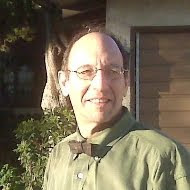Want a job? Think Wind.
Anne B Butterfield, May 10, 2009 (Daily Camera)
New graduates emerging soon from high schools and colleges always want to hitch their wagon to a star -- and the star most visible now on the American horizon is a three-bladed turbine rotor.
Our new graduates may be glad to know that in this economy that's squalid with bad news, wind power is making jobs like crazy while drawing people and industries together. This was particularly evident at the recent WINDPOWER Conference held this week in Chicago which drew a record breaking 23,000 people, 10,000 more than last year.
Striding across the millions of square feet of the exhibition hall of the conference, I caught wild glimpses, like a 6-foot diameter ring gear framing the white-blonde heads of men with Danish accents leaning in to chat with developers in cowboy hats, their pointed boots peeking out from good trousers.
Passing by a man yelling German into his phone, I heard snatches of English on various levels of tech: "The finishing removes asperities while reducing the surface less than a thousandth of an inch and doesn't change the geometry of the gear," and, "We can retrofit commissioned turbines," and, "Hey check out those temperature sensors!"
Many of the new conference exhibitors were from the auto supply industry, having broadened their mission to serve the wind industry as it rises to the protean task of supplying 20 percent of the nation's energy in the next 20 years.
Having added eight gigawatts of capacity to the grid in 2008 (a 60 percent surge over the prior year) and inventing 35,000 jobs, the industry is promising to match that contribution again this year.
While our country is being slammed with plant closings and layoffs, the wind industry is countering by opening plants every few months, with the German company Siemens announcing this week it will open a 300,000 square foot nacelle manufacturing plant in Hutchinson Kansas. Meanwhile the industry is scrambling with community colleges to ramp up degree and certificate programs to produce the sorely needed technicians to work on brand new wind farms.
"We need welders, pipe fitters, all kids of vocational skills really, and I would gladly pay a few cents per hour on each laborer's work to fund the education of young people to be able to do this work," said Carole Engelder of Horizon Wind, a prominent wind development company based in Texas.
New technicians need to be ready to work where the wind is and that can mean living in remote locations; they also need to be comfortable in the confined space of a nacelle propped 400 feet in the air. Wind recruits need to love cross-cultural communication because wind energy brings people together from around the world and often plunges them into backcountry areas steeped in proud tradition. Different customers require different approaches.
To work in manufacturing, strong candidates will have the math skills to grasp tolerances of 2/1000th of an inch on a 14-foot diameter gear, and if they get it wrong that means scrapping the piece.
These requirements challenge employers to the point of poaching other companies' workers or hiring kids out of training too early.
College educated candidates will need training in combinations of engineering and physics, finance, business, tax, and law, to seize the toughest creative challenges like transmission, business development and supply chain management. It doesn't hurt to know some Chinese, either, with China opening a huge drive toward wind as well.
The best chance for Americans to seize these domestic and international jobs is to call Congress and declare "YES on RES" to support the Renewable Electricity Standard that would require a national benchmark of about 20 percent of our power coming from renewables by 2020.
America better call, because the fossil fuel lobby is paying top dollar to lobbyists to keep business going as usual, and that means more nuclear waste, more toxins from coal, and more hundreds of billions going overseas for oil.
The conference was spangled with the star power of governors and federal figures cheerleading our renewable energy future. Featured most of all was Texas oilman T. Boone Pickens, who abandoned oil drilling for the greater promise of energy independence through wind power, with his children and nation in mind. He had this to say to new graduates who are interested in wind: "This is the year that new legislation is coming. So get self-educated about energy to find out what fits you. And on my Web site you'll find the best information anywhere."












 Plug-in Hybrids, The Cars That Will Recharge America
Plug-in Hybrids, The Cars That Will Recharge America Oil On The Brain
Oil On The Brain